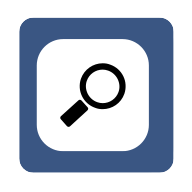In the digital age, we often find ourselves drowning in a sea of browser tabs and bookmarks. It's easy to lose track of important information or become overwhelmed by the sheer volume of content. This blog post will guide you through the process of effectively managing your browser tabs and bookmarks. We'll explore strategies, tools, and best practices to help you stay organized and productive.
Understanding the Importance of Tab and Bookmark Management
The first step towards effective tab and bookmark management is understanding its importance. A cluttered browser can significantly hamper your productivity. It can lead to confusion, frustration, and wasted time. By managing your tabs and bookmarks effectively, you can streamline your online activities and enhance your efficiency.
Moreover, effective tab and bookmark management can also help reduce the load on your computer's resources. Each open tab consumes a certain amount of your computer's memory. By limiting the number of open tabs, you can ensure that your computer runs smoothly.
Strategies for Effective Tab Management
Now that we understand the importance of tab management, let's delve into some strategies. One effective strategy is to limit the number of tabs you have open at any given time. This not only reduces the load on your computer but also makes it easier for you to find the information you need.
Another strategy is to make use of tab groups. Many modern browsers allow you to group your tabs based on different categories or tasks. This can help you stay organized and focused on your current task.
Tools for Tab Management
There are several tools available that can assist you in managing your tabs. Extensions like OneTab, Tab Wrangler, and Tab Snooze can help you consolidate your tabs, automatically close unused tabs, and even schedule tabs to open at specific times.
It's important to choose a tool that fits your specific needs and workflow. Some people might prefer a simple tool that just consolidates all their tabs into a list, while others might need more advanced features like scheduling or automatic closing.
Strategies for Effective Bookmark Management
Moving on to bookmarks, there are also several strategies you can employ to manage them effectively. One strategy is to regularly review and organize your bookmarks. This can help you remove outdated or unnecessary bookmarks and keep your bookmark list clean and relevant.
Another strategy is to make use of folders and tags. By categorizing your bookmarks into different folders or tagging them with relevant keywords, you can quickly and easily find the bookmarks you need.
Tools for Bookmark Management
Just like with tabs, there are also several tools available for bookmark management. Extensions like Raindrop.io, Bookmark OS, and Tidy Sidebar can help you organize your bookmarks, sync them across devices, and even share them with others.
Again, it's important to choose a tool that fits your specific needs and workflow. Some people might prefer a simple tool that just organizes their bookmarks into a list, while others might need more advanced features like syncing or sharing.
Best Practices for Tab and Bookmark Management
To wrap up, let's go over some best practices for tab and bookmark management. First, make it a habit to regularly review and organize your tabs and bookmarks. This can help you stay on top of your digital clutter and ensure that you're always working with the most relevant and useful information.
Second, make use of the tools and features available to you. Whether it's tab groups, bookmark folders, or third-party extensions, these tools can greatly enhance your tab and bookmark management.
Lastly, remember that effective tab and bookmark management is not a one-size-fits-all solution. Everyone has different needs and workflows, so don't be afraid to experiment and find the strategies and tools that work best for you.
Wrapping Up: Mastering Your Browser Tabs and Bookmarks
In conclusion, effective tab and bookmark management is a crucial skill in the digital age. By understanding its importance, employing effective strategies, using the right tools, and following best practices, you can take control of your digital clutter and enhance your productivity. Remember, the key is to find what works best for you and make it a part of your regular routine.

